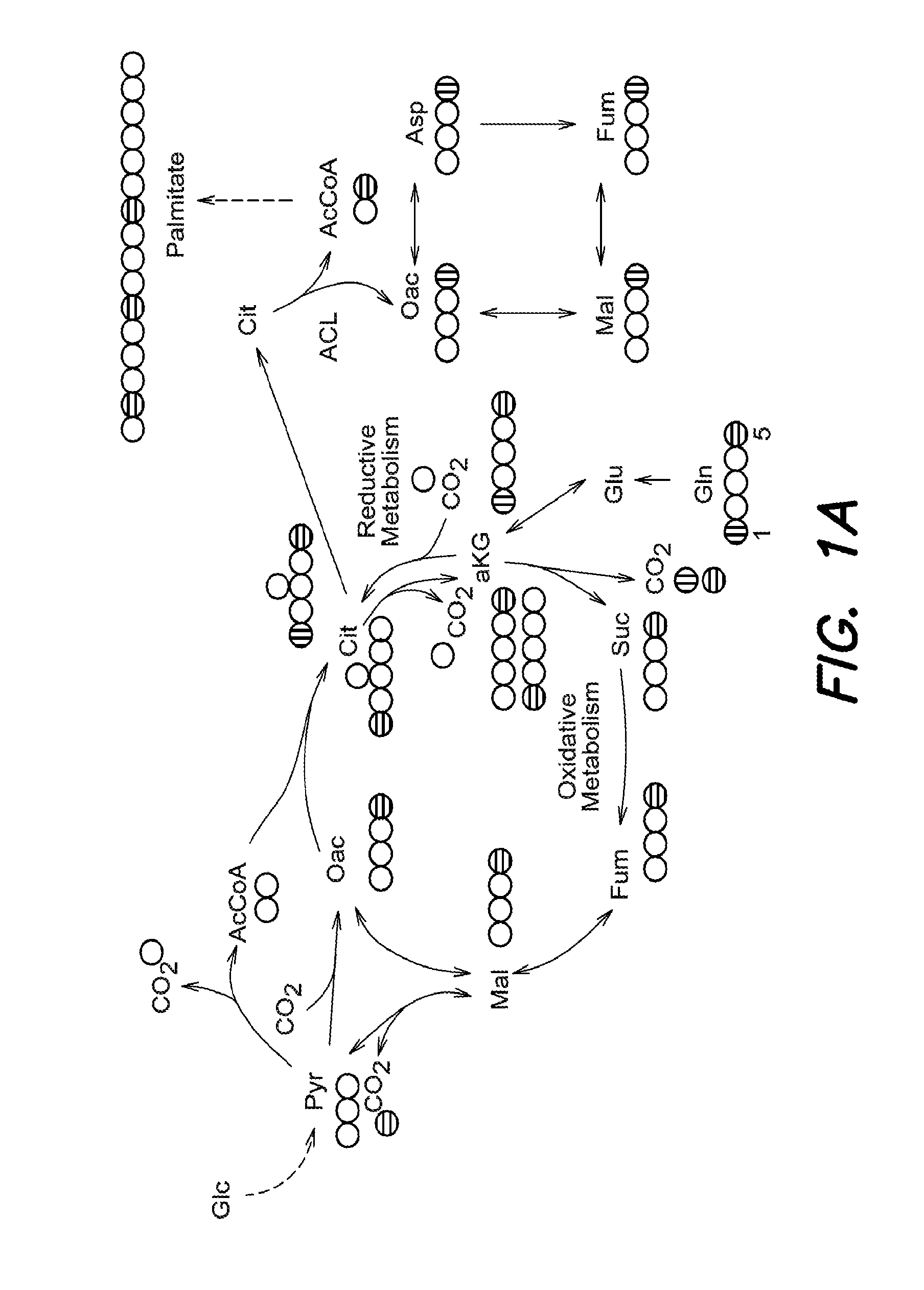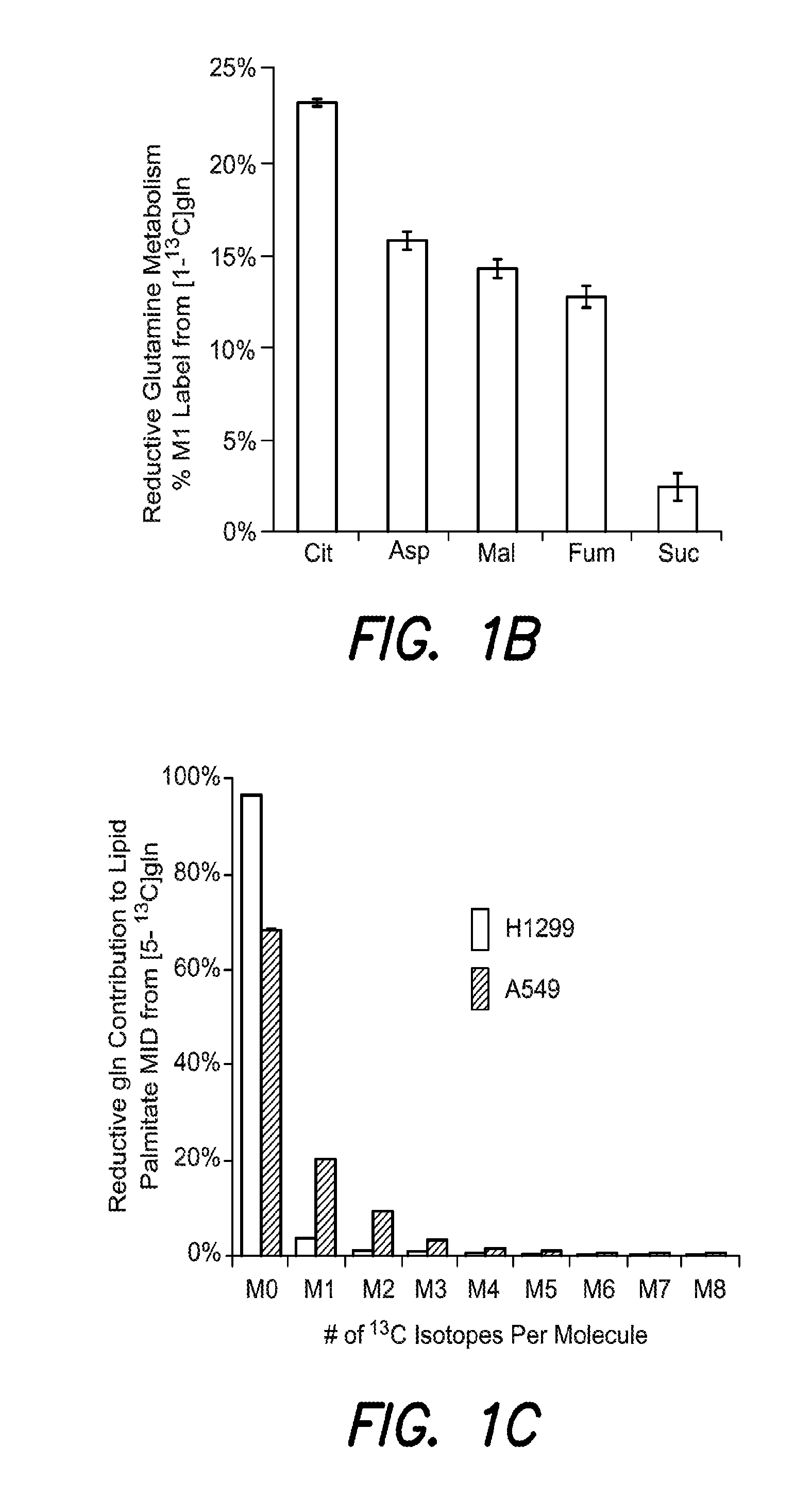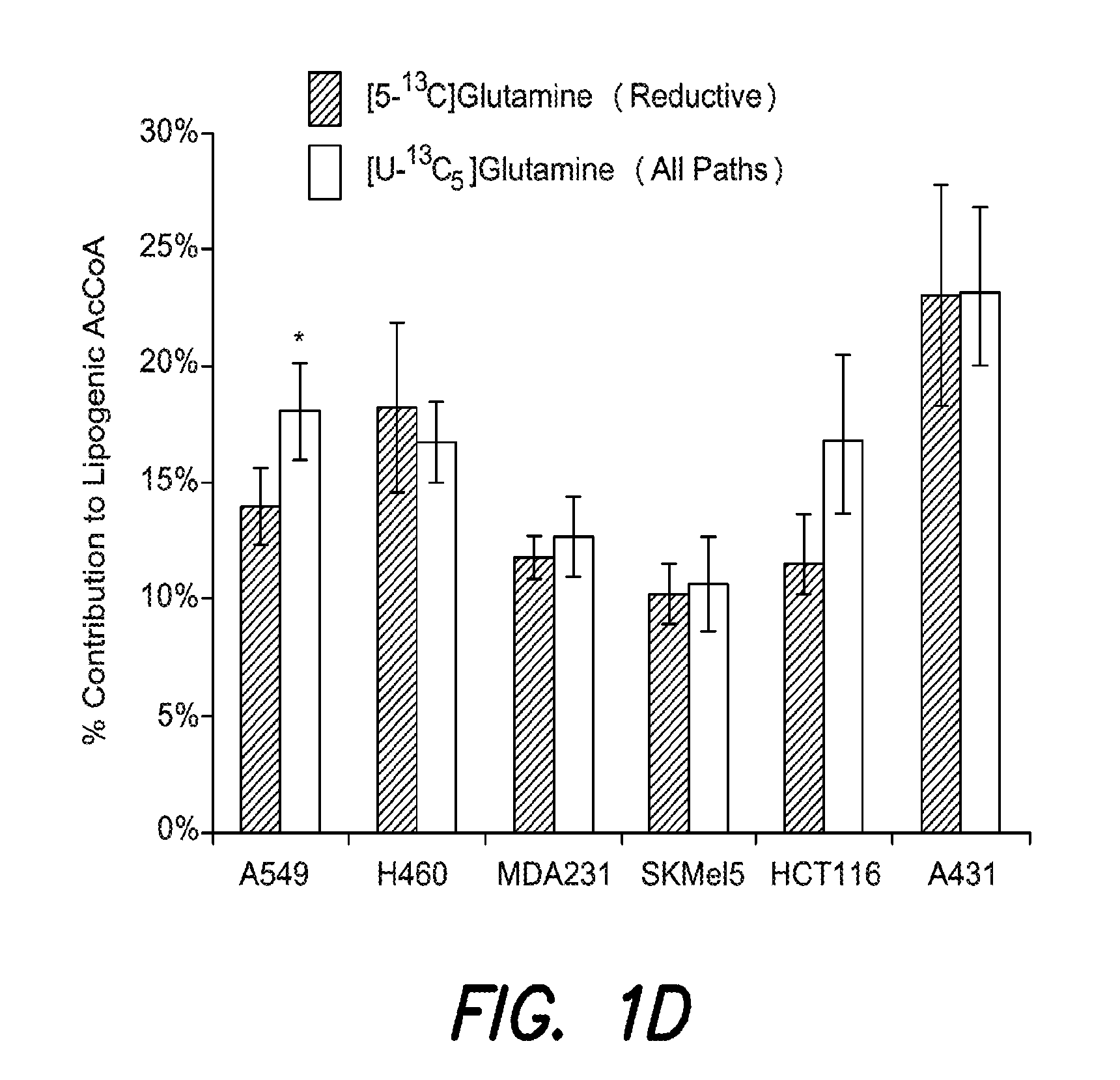Metabolic gene, enzyme, and flux targets for cancer therapy
a cancer therapy and metabolic gene technology, applied in the direction of chemical treatment enzyme inactivation, biocide, drug composition, etc., can solve the problems of unrecognized glutamine metabolism and utilization of hypoxic cells, and achieve the effect of regulating carbon utilization
- Summary
- Abstract
- Description
- Claims
- Application Information
AI Technical Summary
Benefits of technology
Problems solved by technology
Method used
Image
Examples
example 1
Reductive Carboxylation of αKG to Isocitrate is the Preferred Pathway of Glutamine-to-Lipid Flux
[0175]Recent results from MFA conducted in lung carcinoma cells, glioblastoma cells, and quiescent fibroblasts indicate a high degree of reversibility for the IDH reaction in tumor cells (26-28). To determine whether this reaction is used for biosynthesis (i.e., supplies carbon to AcCoA and metabolites downstream of ACL) we cultured tumor cell lines of various origins with [1-13C]glutamine (labeled on the first carbon only) and quantified the isotopic label present in metabolite pools along this pathway using gas chromatography / mass spectrometry (GC / MS). Here M0, M1, M2 mass isotopomers correspond to ion fragments containing zero, one, or two 13C atoms from the tracer, respectively. In proliferating cells, glutamine is converted to glutamate during nucleotide synthesis or by glutaminase, and the resulting glutamate is metabolized by glutamate dehydrogenase or transaminase reactions to gen...
example 2
Cytosolic IDH1 is the Primary Mediator of Reductive Carboxylation Flux
[0178]Mammalian cells express three IDH enzymes encoded by separate genes: IDH1 (cytosolic, NADP+-dependent), IDH2 (mitochondrial, NADP+-dependent), and IDH3 (mitochondrial, NADP+-dependent). Only the NADP+-dependent isozymes are known to catalyze the reductive reaction and consume αKG; however, the specific enzyme responsible for this flux is not definitively known (8, 9). As compartmentalized measurements of metabolite pools and labeling therein cannot yet be reliably obtained, we employed RNA interference to selectively knock down expression of IDH1 and IDH2 in A549 cells. Using the labeling patterns resulting from [1-13C]glutamine as a readout, we measured a significant and robust decrease in reductive carboxylation when IDH1 mRNA was targeted using shRNA (FIG. 2A). These changes in M1 label were consistent across the expected metabolite pools and reproduced with two separate shRNA hairpins. Additional confirm...
example 3
Hypoxia Reprograms Metabolism to Use Reductive Carboxylation as the Primary Source of Lipogenic AcCoA
[0181]In general, hypoxia shifts cells toward a glycolytic or “Warburg-like” phenotype while shunting carbon away from oxidative metabolism (11). However, a functional electron transport chain and glutamine-derived carbon, in particular, are required for proliferation of transformed cells under hypoxia (33). Consistent with these changes, we measured increases in glucose and glutamine consumption as well as lactate secretion in A549 cells cultured under hypoxia (FIG. 3B). Notably, there was no increase in glutamate secretion, indicating that glutamine carbon is used at elevated rates under low O2 conditions.
[0182]We then compared the contributions of reductive glutamine metabolism and glucose oxidation to fatty acid synthesis in cells cultured at normoxia and hypoxia by performing ISA using either [5-13C]glutamine or uniformly labeled [U-13C6]glucose, respectively. Strikingly, we obs...
PUM
| Property | Measurement | Unit |
|---|---|---|
| Fraction | aaaaa | aaaaa |
| Fraction | aaaaa | aaaaa |
| Time | aaaaa | aaaaa |
Abstract
Description
Claims
Application Information
 Login to View More
Login to View More - R&D
- Intellectual Property
- Life Sciences
- Materials
- Tech Scout
- Unparalleled Data Quality
- Higher Quality Content
- 60% Fewer Hallucinations
Browse by: Latest US Patents, China's latest patents, Technical Efficacy Thesaurus, Application Domain, Technology Topic, Popular Technical Reports.
© 2025 PatSnap. All rights reserved.Legal|Privacy policy|Modern Slavery Act Transparency Statement|Sitemap|About US| Contact US: help@patsnap.com



